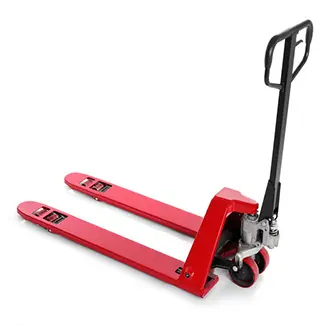


The Advantages of Power-Assisted Pallet Trucks
In today’s fast-paced industrial environment, efficiency and productivity are paramount. Among the various tools that facilitate smooth operations in warehouses and distribution centers, power-assisted pallet trucks stand out as a significant innovation. Combining the traditional utility of manual pallet trucks with electrical assistance, these machines are designed to enhance material handling processes. This article explores the key benefits and applications of power-assisted pallet trucks.
What Are Power-Assisted Pallet Trucks?
Power-assisted pallet trucks are a type of material handling equipment that aids in the lifting and movement of heavy loads. Unlike traditional manual pallet trucks, which rely solely on human strength, these modern machines incorporate electrical power to assist operators in lifting and maneuvering pallets. Typically equipped with a battery-powered motor, they can significantly reduce the physical strain on workers while increasing efficiency.
Enhanced Efficiency in Operations
One of the primary advantages of power-assisted pallet trucks is their ability to improve operational efficiency. In busy warehouses, where time is often of the essence, these trucks can reduce the time it takes to lift and transport goods. With the push of a button, operators can easily maneuver heavy loads without the need for excessive physical effort. This not only speeds up the workflow but also reduces the potential for delays during peak operation hours.
Safety Benefits
In addition to efficiency, power-assisted pallet trucks enhance workplace safety. Lifting heavy loads manually can lead to workplace injuries and fatigue among workers. By utilizing these powered machines, the risk of musculoskeletal disorders and other injuries associated with manual handling is significantly minimized. Operators can complete tasks with greater care and precision, as they are less likely to become fatigued or make mistakes when handling heavy items.

Versatility and Adaptability
Power-assisted pallet trucks are remarkably versatile, making them suitable for a wide range of applications. Whether in retail, manufacturing, or logistics, these trucks can easily navigate narrow aisles and tight spaces due to their compact design. This adaptability allows businesses to optimize their warehouse layouts and improve inventory management practices. Additionally, they can handle various pallet types and sizes, making them an essential tool for many industries.
Cost-Effectiveness
Investing in power-assisted pallet trucks can yield considerable cost savings for businesses in the long run. While the initial purchase price may be higher than that of traditional manual trucks, the reduction in labor costs and the increased efficiency can result in significant savings. Furthermore, these machines have a lower risk of causing damage to products and infrastructure due to their controlled movements, leading to fewer costs associated with accidents and replacements.
Environmental Benefits
With growing concerns about sustainability, power-assisted pallet trucks also offer an environmentally friendly alternative to traditional options. Many models are designed to be energy-efficient, utilizing less power and, in some cases, incorporating features like regenerative braking. By reducing energy consumption, businesses can lower their carbon footprint and contribute to a more sustainable future.
Conclusion
In conclusion, power-assisted pallet trucks are revolutionizing the way businesses handle materials. Their ability to enhance efficiency, improve safety, ensure versatility, provide cost-effectiveness, and promote environmental sustainability makes them an invaluable asset in modern warehousing and logistics operations. As industries continue to evolve and prioritize operational excellence, the role of power-assisted pallet trucks will undoubtedly expand, paving the way for safer and more efficient workplaces. Embracing this technology is not just about keeping up with trends; it is about leading the way toward a future where productivity and safety go hand in hand.



